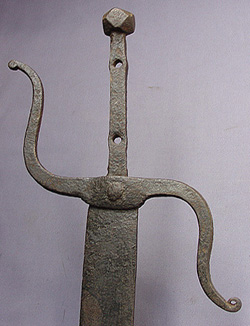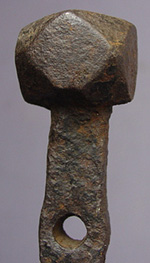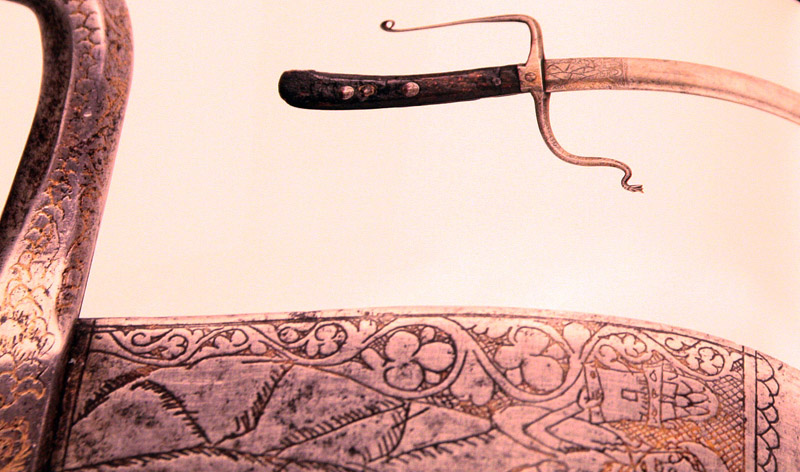Posts: 1,504 Location: Brisbane, Australia
Wed 17 Nov, 2010 2:12 am
There isn't anything very close to the one you showed in the book. There are many examples of S-guards, some examples of riveted guards, and a few dao blades similar in shape, and one jian with a pommel of this type.
Easy enough to find examples online too. Some good examples at
http://www.chinesearms.com/ (and see the bottom of the site for some sample pages from
Iron and Steel Swords of China. See the last sample page for a Republican S-guard dadao that I'd consider a pretty normal S-guard dadao, with the usual ring pommel (I don't think that the rattan wrap on the grip is usual - cloth or cord seems more common).
On this page, you can see a
"swordbreaker" with this type of polyhedral pommel ("swordbreaker" is the most common English name, but it's basically an iron truncheon). This is a very common pommel on late Qing and Republican truncheons, maces, etc. See also the
maces. There are also a couple of examples of riveted guards:
http://www.chinesearms.com/armorbreaker/armorbreaker.htm and
http://www.chinesearms.com/chinesearms/001/ot...bishou.htm .
Blades with scalloped tips like this aren't that common. However, see Fig 1-26 in Yun Zhang's
The Complete Taiji Dao for an example of this type. The google books preview has the whole 1st chapter, the historical and typological overview of dao, so it's an excellent resource. (And a good book on the use of the dao, too.) See also the top dao in Fig 1-46 for a riveted guard (not S-shaped). The top dao and the 2nd dao from the bottom in Fig 1-61 also have riveted guards, the top one a S-guard. (This is hard to see in Zhang, even in the printed book, but the same figure is in colour and clearer in
Iron and Steel Swords of China.)
I don't see the blade as distinctively Chinese, although it's certainly plausible as Chinese - it's the pommel, S-guard, and the guard rivet that make it look very Chinese.






